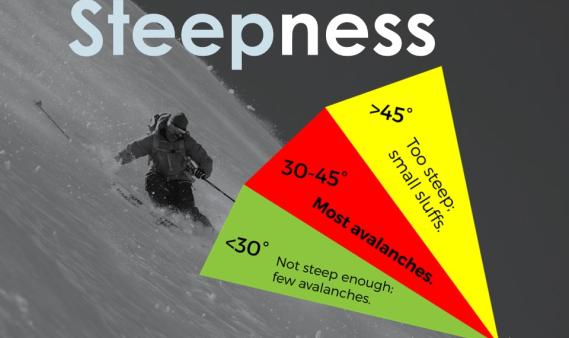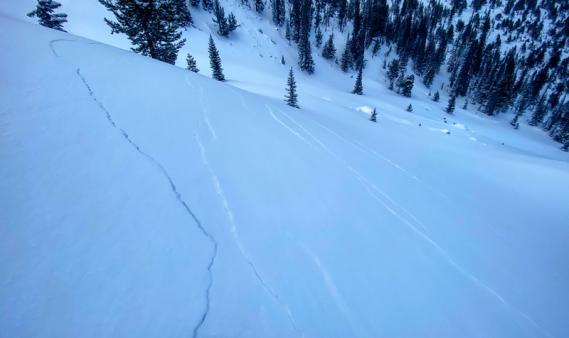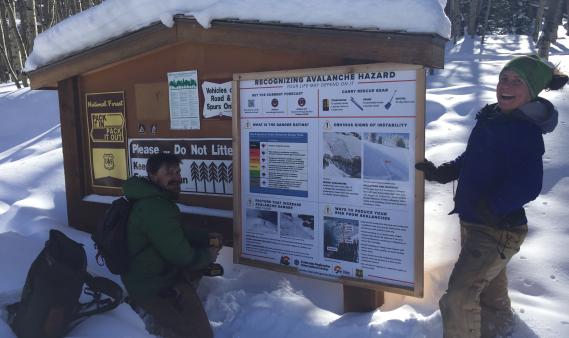Avalanches release on steep slopes and pile debris in low-angle areas. By learning to recognize avalanche terrain, you can avoid it and stay out of avalanches.
Avalanches are possible any time you have snow on a slope. The best thing you can do before you head into the mountains is check the avalanche forecast.
If you are traveling where there isn't a current avalanche forecast, here are some simple things that will help you avoid avalanches.
- Avalanches are possible when you have snow on a slope steeper than about 30 degrees.
- Most avalanches happen during or soon after a big snowstorm, period of strong winds, or during a thaw (rapid increase in temperature).
- Signs of higher avalanche danger include recent avalanches, cracking in the snow, and audible collapsing. Avoid traveling on or under similar slopes.
If you want to dig deeper, you can view a list of educational resources on our Education Resources page.

Recognize avalanche terrain

Recognize the signs of unstable snow
When the avalanche danger is higher, there are signs telling you the snow is unstable. Avoid areas where you see recent avalanches, cracking in the snow, or hear the snow collapsing.

Carry avalanche rescue equipment
If someone in your group gets caught in an avalanche, you need to rescue them. Everyone in your group needs to have, and know how to use, avalanche rescue equipment.

Here is a short tutorial on avalanche safety
Knowing about avalanches will help you avoid them. This short tutorial on avalanche safety from the National Avalanche Center is a great place to start.

